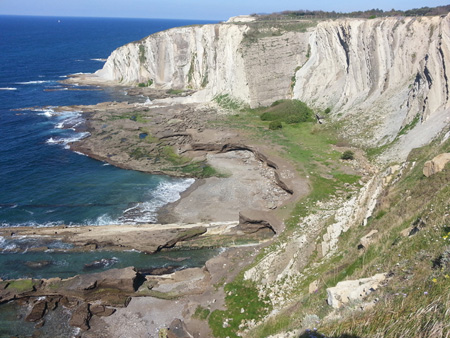Did the Anthropocene begin with the nuclear age?
An international research group, in which the UPV/EHU-University of the Basque Country is participating, has identified 16 July 1945 as the date of the dawn of a new geological age in Earth history
- Research
First publication date: 20/01/2015

We humans are having such a marked impact on the Earth that we have changed its geology, creating new and distinctive strata that will persist into the future. This is the idea behind the Anthropocene, a new epoch in Earth history first proposed by the Nobel Prize-winning atmospheric chemist Paul Crutzen 15 years ago. Since then, the idea has spread widely through both the sciences and humanities.
But if the Anthropocene is to be a geological epoch, when should it begin? We humans have long been modifying the environment, and the different ideas as to when the Anthropocene could have begun vary by thousands of years: it could have started with the dawn of agriculture, due to the Industrial Revolution, and even in the future (for the greatest human-made changes are very likely still to come).
Now, members of the international working group formally analysing the Anthropocene suggest that the key turning point happened in the mid-twentieth century. This was when we humans did not just leave traces of our actions, but began to alter the whole Earth System. There was a 'Great Acceleration' of the human population, of carbon emissions, of species invasions and extinctions, of earth and soil moving, of the production of concrete, plastics and metals.
This concept includes the start, too, of the nuclear age, when radioactive isotopes were scattered across the planet, from the poles to the Equator, to leave a detectable signal in modern strata virtually everywhere on the earth's surface.
The proposal, signed up to by 26 members of the working group, who come from universities and research centres across the world and which includes Dr Jan Zalasiewicz (University of Leicester, UK), who also chairs the group, the Nobel laureate Paul Crutzen, and Alejandro Cearreta of the UPV/EHU, is this: the beginning of the Anthropocene could be considered to be drawn at the moment of detonation of the world's first nuclear bomb: on 16 July 16, 1945. The beginning of the nuclear age marks the historic turning point, because from then onwards the human species has had access to a new, vast new energy source, and it is also a time lapse that can be tracked within geological strata, by using a great variety of geological clues. This human-driven global radiation perfectly sums up the multiple clues of a planetary change caused by our species and which we are experiencing.
Next year, the Anthropocene Working Group will put together recommendations on whether this new time unit should be officially formalised and included in the geological time table, and in that case, how it should be defined and characterised.
Reference
Zalasiewicz, J., Waters, C.N., Williams, M., Barnosky, A.D., Cearreta, A., Crutzen, P., Ellis, E., Ellis, M.E., Fairchild, I.J., Grinevald, J., Haff, P.K., Hajdas, I., Leinfelder, R., McNeill, J., Odada, E.O., Poirier, C., Richter, D., Steffen, W., Summerhayes, C., Syvitski, J.P.M., Vidas, D., Wagreich, M., Wing, S.L., Wolfe, A.P., An, Z. & Oreskes, N. Published online. When did the Anthropocene begin? A mid-twentieth century boundary is stratigraphically optimal. Quaternary International.
http://www.sciencedirect.com/science/article/pii/S1040618214009136






